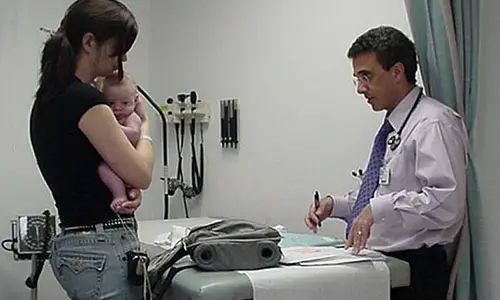A doctor or a medical practitioner who specializes in children and their health treatments is called a Pediatrician. The science which deals with the same branch is termed as Pediatrics. It groups the new born babies, children, and adolescents, with an age limit of usually upto 18 years.
The history of Pediatric science ages back to the 1800s, however, the Swedish physician Nils Rosén von Rosenstein is considered as the founder of today’s modern Pediatrics.
A Pediatrician is a graduate from a reputed medical school and should have finished his 3 years of Pediatrics residency program. He also must have passed his American Board of Pediatrics exams and to remain certified, has to qualify his regular education requirements as well from time to time.
In short, a doctor who has specialized training in emotional, physical and behavioral needs of a child is termed as a Pediatrician. Ten Interesting facts about Pediatricians/Pediatrics are as follows:
- The Pediatrics field was first discovered by the French. They were the first to realise that a child should be addressed by a different doctor as their needs are different.
- Some of its traces are also found in Ancient India where a child’s doctor was addressed as ‘kumara bhrtya’. ‘Sushruta Samhita’, the ayurvedic text, also mentions Pediatrics.
- The word Paediatrics is derived from two Greek words, ‘pais’ meaning child and ‘iatros’ meaning doctor.
- In the era 1800s, the first tutorial of Pediatric was taught, as a part of one of the medical specialties.
- The first Pediatrics hospital was discovered in the year 1802 and was named Hôpital des Enfants Malades in Paris.
- The first Pediatric book was published in the year 1472.
- To define, Pediatricians are doctors who deal with anyone from a new born baby to teenagers up to the age of 18.
- They are the right set of doctors who will help you with your baby’s immunizations.
- Pediatrician also helps you track your child’s health and development. You can discuss issues related to your child’s growth and well being with him.
- In the early years, this science focused more on diseases to do with young people, and slowly the study evolved around kids.
How to find a Pediatrician?
If you are ready to deliver, then be calm and concentrate on that. It’s a hospital’s job usually to arrange for a Pediatrician. After your delivery, the hospital provides you with a pediatrician who will come on rounds every couple of hours to keep a close watch on your baby.
How frequently does one has to visit him?
After you are discharged from the hospital, its better to keep your new born under his surveillance every 72 hours preferably for the first couple of months, and then slowly the number of visits will reduce. He will also guide you with the immunization process, motor skill development checks, nutrition and fitness needs.
What is the need for regular child visits?
So that he can keep a constant check on your child’s growth and development, in every aspect. He will also help analyze and treat your child’s illness and other related health problems. Also, if your child needs care beyond pediatrician’s expertise, then he can also guide you to collaborate with specialists.
Are there any subspecialties for Pediatrics?
Yes, there are numerous other branches which route out of this term, few are Adolescent medicine, Developmental and Behavioral Pediatrics, Pediatric cardiology, Pediatric critical care, Pediatric dermatology, Pediatric emergency medicine, Pediatric infectious disease, Pediatric neurology, Pediatric psychiatry and Social Pediatrics.
What about the salary package?
The approx figure paid to a Pediatrician in the year 2014 was $178,197, according to Salary.com. Also, as per The U.S. Bureau of Labor Statistics report, Mississippi topped the 2013 charts, paying a salary of $219,830 annually. However, it varies from country to country, state to state.









Leave a Reply